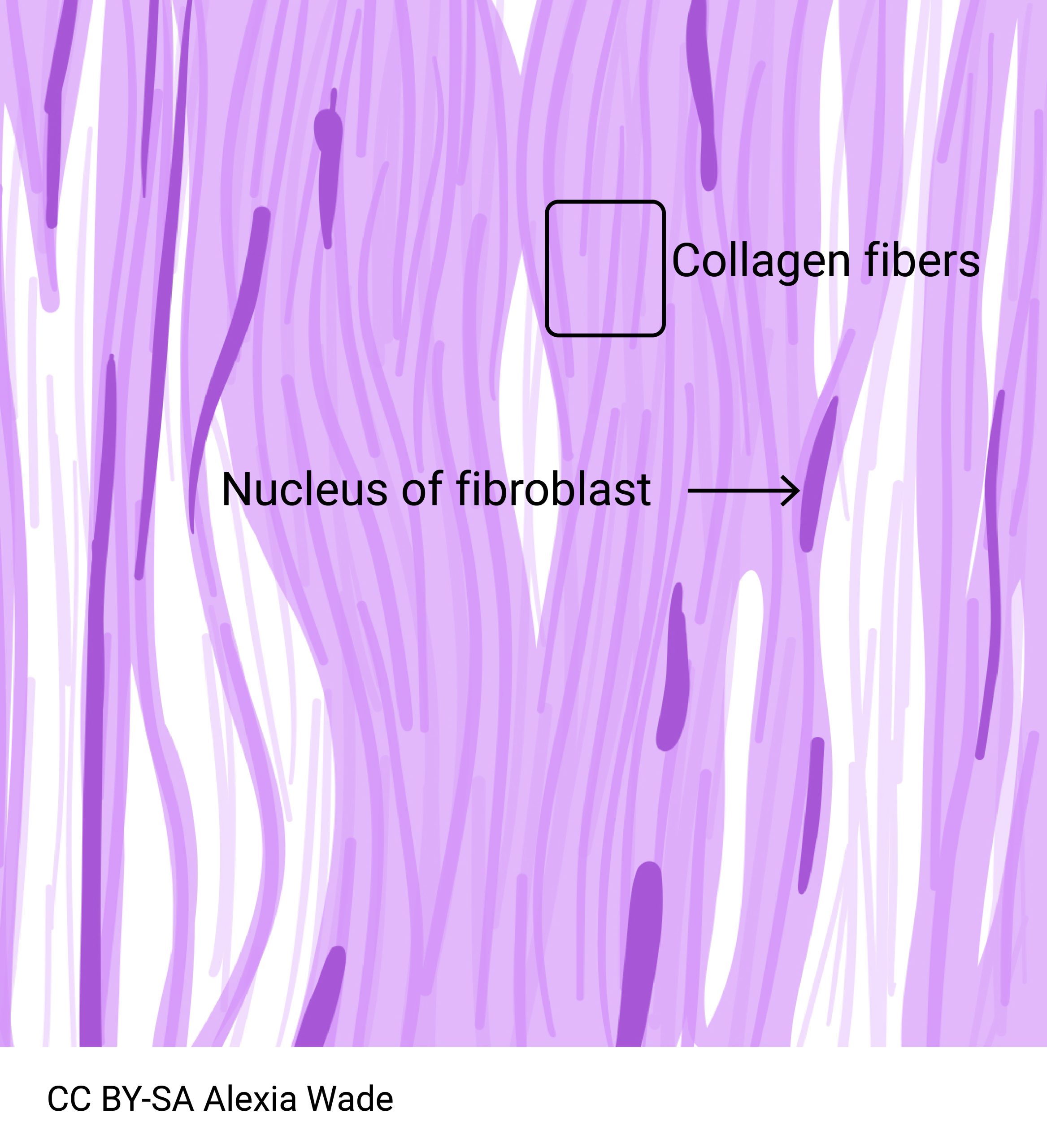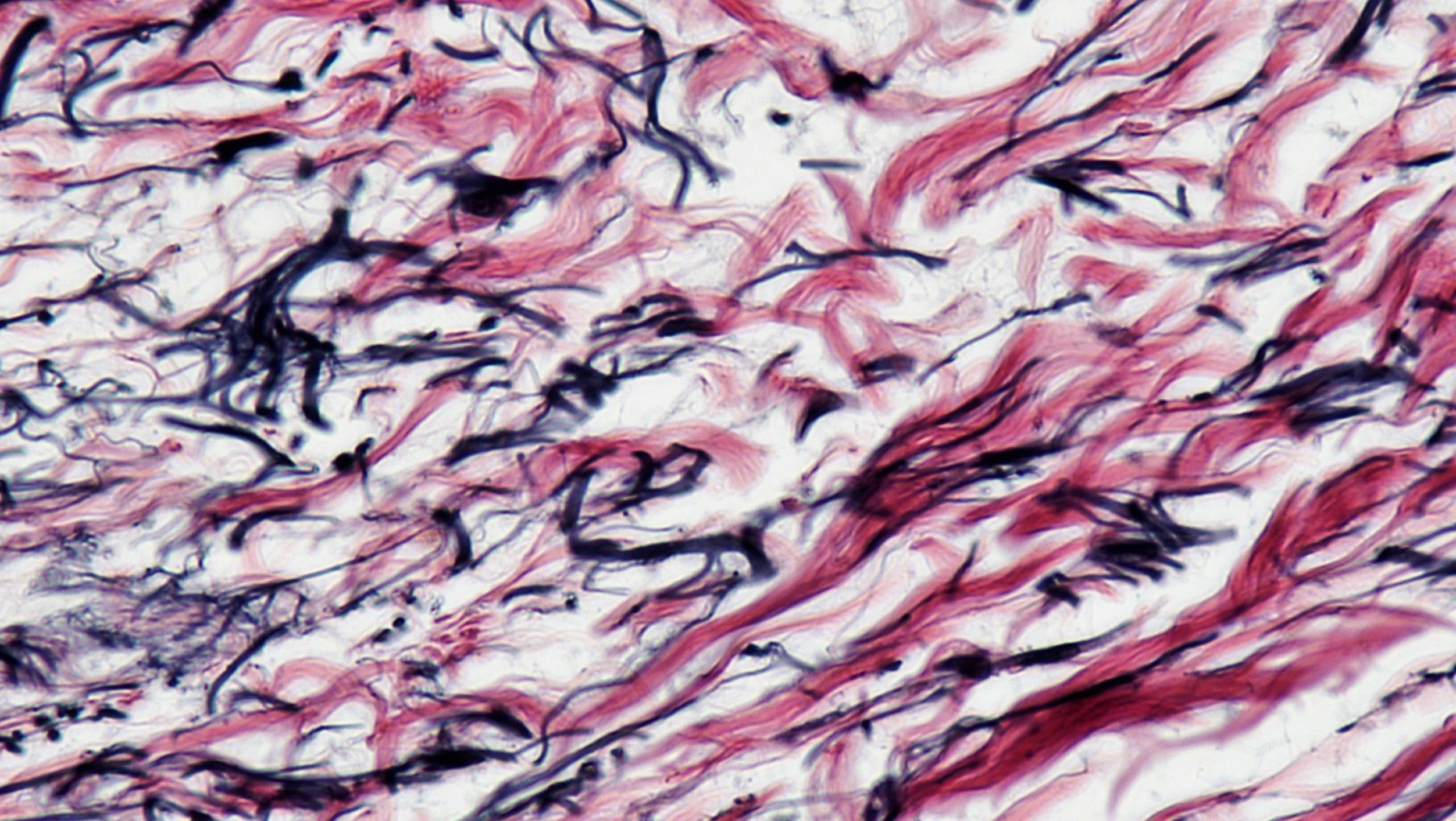Dense Connective Tissue
Objective 7.7
7.7.1 Characterize, and give examples of, dense connective tissue.
Now we turn our attention to dense connective tissue. This connective tissue has more collagen fibers than loose connective tissue and therefore, is more resistant to stretching.
Dense connective tissue has three subcategories:
- dense regular;
- dense irregular; and
- elastic.

Dense regular connective tissue has fibroblasts and collagen fibers that run parallel to each other, providing strength and resistance to stretching. It appears grossly as a white, shiny sheet with a definite “grain” or orientation to the fibers. Dense regular connective tissue is made up of collagen fibers in regular bundles with a few fibroblasts. It is found in tendons (which connect muscle to bone); in ligaments (connecting bone to bone); and the sheet-like tendons called aponeuroses. Notice the dense structure combined with a lack of blood supply, which makes these tissues extremely slow to heal after injury.

Clinical Connection
You may have heard of tendinitis or inflammation of a tendon. This is a common overuse injury seen in part-time athletes, such as golfers, tennis players, dancers, or runners. Tendons are hard to heal because they have a sparse blood supply. Typical treatment includes icing the affected area, taking NSAIDs (non-steroidal anti-inflammatories) such as Ibuprofen, Aspirin, or Naproxen (Aleve). Physical therapy may be required to restore proper function.
Dense irregular connective tissue has fibroblasts and collagen fibers, but as the name suggests, the collagen fibers run in many different directions. This gives strength in all directions. It is found in the fasciae, which form sheets between muscles; in the deeper part of the skin; in the “peri-” tissues (periosteum, perichondrium, pericardium) that surround bone, cartilage and the heart, respectively; heart valves; and capsules surrounding organs.

The last dense connective tissue to consider is elastic connective tissue, made up of many oriented elastic fibers (like little bungee cords) and a few scattered fibroblasts. This tissue is found in the lungs, trachea, bronchial tubes and vocal cords; in the walls of arteries; in ligaments between vertebrae; and in the suspensory ligaments of the penis. This tissue is stretchy; it allows a structure (like blood arteries) to stretch or dilate and then return to their original shape, much like a nice comfortable pair of elastic waist gym pants!

Media Attributions
- Print © University of Michigan is licensed under a CC BY-NC-SA (Attribution NonCommercial ShareAlike) license
- U07-050 dense regular © Wade, Alexia is licensed under a CC BY-SA (Attribution ShareAlike) license
- Irregular_Dense_Connective_Tissue_Proper_in_dermis_labeled_&_unlabeled © RWhitwam is licensed under a CC BY-SA (Attribution ShareAlike) license
- U07-052 Elastic_Connective_Tissue © Berkshire Community College Bioscience Image Library is licensed under a CC0 (Creative Commons Zero) license

